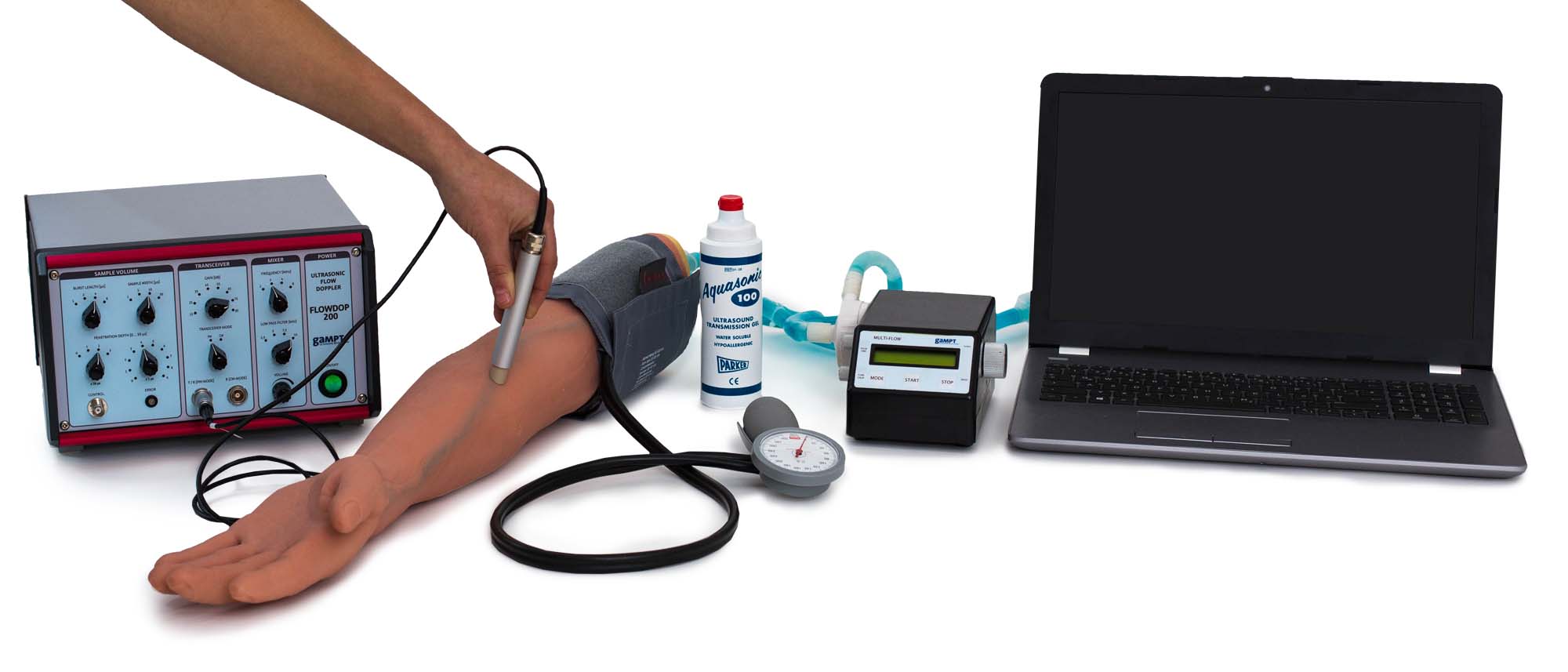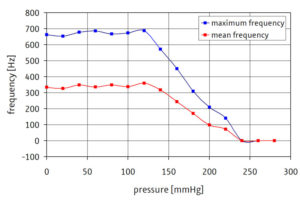Article No. VK-MED06
MED06 Peripheral Doppler blood pressure measurement
Demonstration of the relationship between blood pressure measurements and blood flow examinations by means of the ultrasonic Doppler method
The experiment demonstrates the relationship between blood pressure measurements and blood flow examinations by means of the ultrasonic Doppler method. For this, using a realistic arm phantom and a modified blood pressure cuff the vessel is loaded with defined pressure and the blood flow parameters (average and maximum frequency) are measured.
Keywords: Doppler sonography, blood flow velocity, pulse curves, occlusion pressure, indirect and non-invasive blood pressure measurement, peripheral occlusive disease
Ultrasonic Doppler methods (Doppler sonography) are the most important methods in the non-invasive diagnosis of peripheral occlusive diseases. The determination of the vascular occlusive pressure (blood pressure measurement) is performed analogously to conventional blood pressure measurement according to Riva-Roci and Korotkoff. With the Doppler method, it is, however, possible to record flow conditions quantitatively more accurately, at different vessels and also in the case of occlusions. The systolic occlusive pressure used for the diagnosis can thereby be determined substantially more accurately. The method is primarily used in the diagnosis of peripheral arterial occlusive diseases. In the experiment, the technical carrying out of the measurement and the qualitative and quantitative alteration of the blood flow curves for different occlusive pressures are investigated. With the centrifugal pump it is here possible to investigate pulsatile as well as continuous flows.
| Ort.no. | Description |
|---|---|
| 50400 | Ultrasonic Doppler FlowDop200 |
| 50130 | Centrifugal pump MultiFlow |
| 50435 | Ultrasonic Doppler probe |
| 50160 | Arm phantom |
| 50300 | Blood pressure cuff |
| 70200 | Ultrasonic gel |

